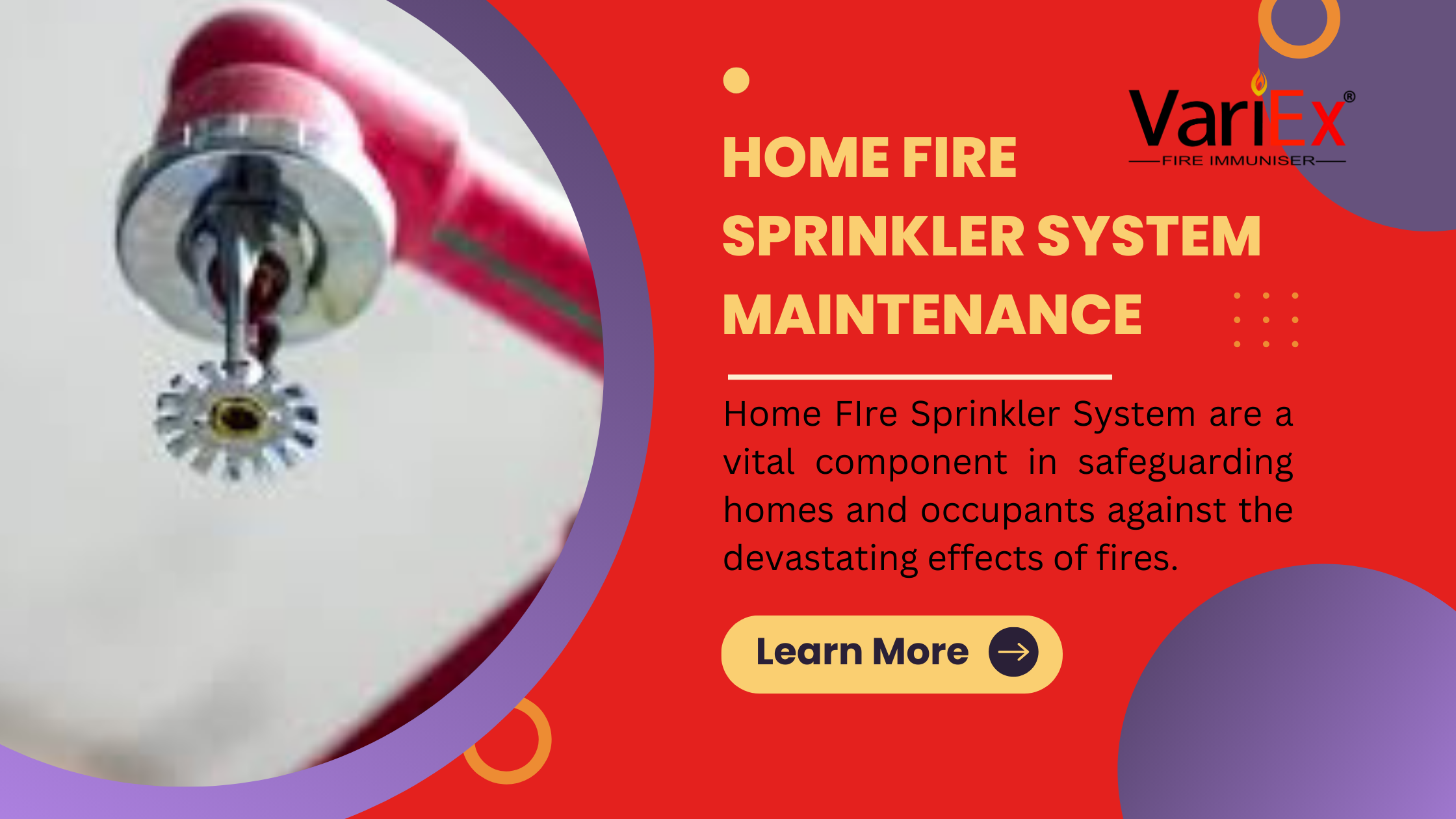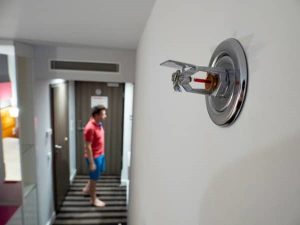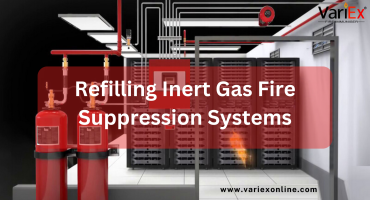![]()
Fire Immuniser
+91-7829629111
Email: info@variex.in
Varistor Technologies Pvt. Ltd.
Block-1, First Floor, Ardente Office One, Hoodi Circle, ITPL Main Road, Bengaluru, Karnataka 560048, IN
Home Fire Sprinkler System Maintenance
Home fire sprinkler systems are a vital component in safeguarding homes and occupants against the devastating effects of fires. While installation of these systems is crucial, regular maintenance is equally important to ensure their effectiveness in times of need. This guide provides comprehensive information on the importance of maintaining home fire sprinkler systems and outlines key maintenance practices for homeowners to follow.
Importance of Maintenance
- Reliability: Regular maintenance ensures that the sprinkler system operates reliably when needed, minimizing the risk of system failures during a fire emergency.
- Performance: Proper maintenance enhances the performance of the sprinkler system, ensuring it effectively suppresses fires and limits property damage.
- Compliance: Maintenance is often a requirement by local building codes and regulations to ensure the system remains compliant with safety standards.
- Cost Savings: Timely maintenance can prevent costly repairs or replacements, saving homeowners from financial burdens in the long run.
- Peace of Mind: Knowing that the sprinkler system is well-maintained provides homeowners with peace of mind, knowing they have taken proactive steps to protect their property and loved ones.
Key Maintenance Practices
- Regular Inspections: Conduct visual inspections of the sprinkler heads, pipes, and control valves at least once every six months to check for signs of damage, corrosion, or obstructions.
- Functional Testing: Test the operation of the sprinkler system annually by activating a single sprinkler head to ensure proper water flow and coverage.
- Clear Surroundings: Keep the area around sprinkler heads clear of any obstructions such as furniture, decorations, or storage items to allow for unimpeded water distribution in case of a fire.
- Temperature Control: Maintain adequate temperatures within the home to prevent freezing of the sprinkler system during colder months, as freezing can cause pipes to burst and render the system ineffective.
- Professional Maintenance: Schedule regular maintenance checks by qualified professionals to inspect the entire system, including pipes, valves, and water supply, and address any issues promptly.
- Documentation: Keep detailed records of maintenance activities, including inspection dates, test results, and any repairs or replacements performed, to ensure accountability and track the system's maintenance history.
Home Fire Sprinkler System Maintenance
- Understanding System Components: Familiarize yourself with the different components of the fire sprinkler system, including the water supply, control valves, pipes, and sprinkler heads. Understanding how each component functions will help you identify potential issues during maintenance checks.
- Frequency of Maintenance: While regular visual inspections should be conducted every six months, some aspects of maintenance may require more frequent attention. For example, in areas prone to freezing temperatures, additional checks may be necessary before the onset of winter to prevent pipe damage.
- Visual Inspection Checklist: Develop a comprehensive checklist for visual inspections to ensure thorough examination of all system components. This checklist should include items such as:
- Checking for corrosion or rust on pipes and fittings.
- Ensuring that sprinkler heads are not painted over or obstructed by debris.
- Verifying that control valves are in the correct position and free from leaks.
- Examining pressure gauges to ensure they indicate normal operating pressure.
- Functional Testing Procedures: Conducting annual functional tests involves more than just activating a single sprinkler head. Develop a systematic approach for testing the entire system, including:
- Activating multiple sprinkler heads to verify adequate water distribution.
- Testing alarm systems to ensure they activate in conjunction with the sprinkler system.
- Verifying the operation of pumps or backup power sources, if applicable.
- Emergency Response Plan: In addition to maintenance activities, ensure that you have an updated emergency response plan in place. This plan should outline procedures for evacuating the home in the event of a fire, as well as protocols for contacting emergency services and alerting neighbors.
- Professional Maintenance Services: While homeowners can perform basic maintenance tasks, certain aspects of fire sprinkler system maintenance require the expertise of qualified professionals. Consider hiring a certified fire protection technician to conduct thorough inspections and address any complex issues.
- Compliance with Standards and Regulations: Stay informed about local building codes and regulations pertaining to fire sprinkler systems. Ensure that your maintenance practices align with these standards to remain compliant and avoid potential penalties or liabilities.
- Education and Training: Educate household members about the importance of fire sprinkler system maintenance and involve them in routine inspection activities. Consider organizing training sessions or workshops to enhance their understanding of fire safety practices.
Home fire sprinkler systems play a crucial role in mitigating the impact of fires and protecting lives and property. By prioritizing regular maintenance, homeowners can ensure their sprinkler systems remain in optimal condition, providing reliable fire protection when it matters most. Stay proactive, stay safe.
Frequently Asked Questions
Maintenance is crucial to ensure that your fire sprinkler system operates effectively during a fire emergency. Regular maintenance helps identify and address any issues that could compromise the system's performance, reliability, and compliance with safety standards.
Visual inspections of your home fire sprinkler system should be conducted at least every six months. Additionally, annual functional tests should be performed to verify the system's operation and performance.
During a visual inspection, check for signs of damage, corrosion, or obstruction in the sprinkler heads, pipes, control valves, and water supply. Ensure that all components are in good condition and free from any obstructions that could impede water flow.
While homeowners can perform basic visual inspections and maintenance tasks, certain aspects of fire sprinkler system maintenance, such as professional testing and repairs, should be handled by qualified technicians to ensure safety and compliance with regulations.
Annual functional tests involve activating the sprinkler system to ensure proper water distribution and coverage. This may include testing multiple sprinkler heads and verifying the operation of alarm systems, pumps, and backup power sources.
Final Say
At VariEx.in and VariexOnline.com, we specialize in supplying and installing top-quality fire fighting systems and equipment. From fire extinguishers to advanced suppression systems, we offer comprehensive solutions tailored to your needs. Our experienced team ensures precise installation and maintenance for optimal safety.
Trust VariEx for reliable fire protection. Contact us online or call 7829629111 to learn more.











